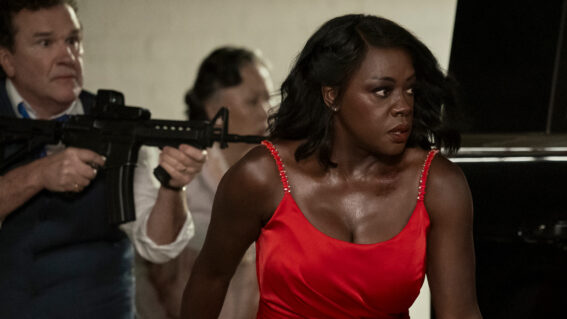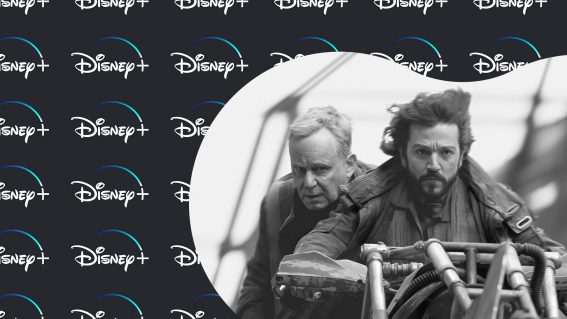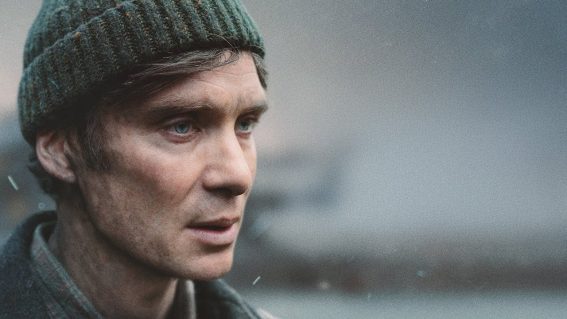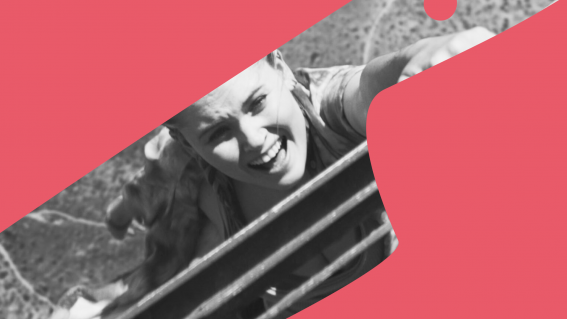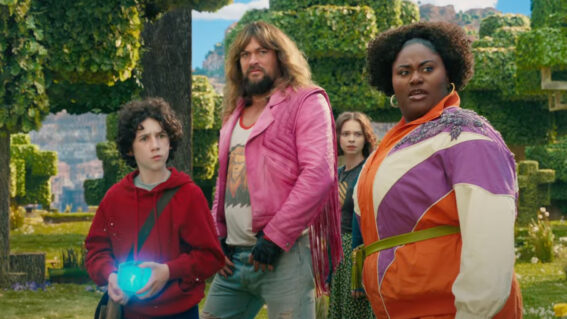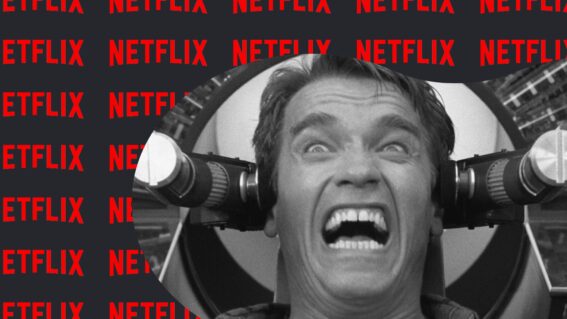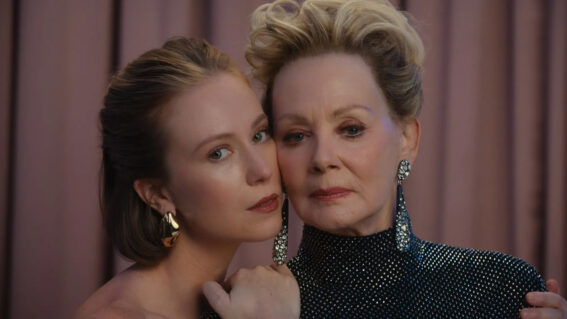Interview: Director Anna Biller on her Extraordinary ‘The Love Witch’
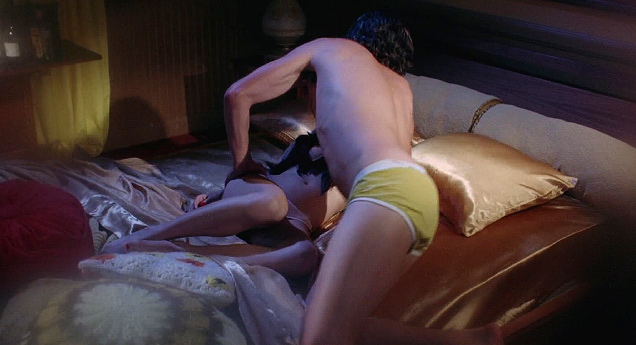
Playing in Ant Timpson’s Incredibly Strange section of the NZ International Film Festival, The Love Witch finally reaches NZ screens this month. Multi-hyphenate director Anna Biller carried out an intimidating number of crew roles on the film – everything from writing and editing to production design, music and costume design – and the result is a singular piece of cinema. Neither parody nor straightforward homage, this tale of a modern day witch using spellcraft to find love is a stunning film. Biller joined Steve Newall on the phone to discuss her critically-adored (don’t let that put you off) feature.
FLICKS: It’s really, really exciting that The Love Witch is playing as part of the New Zealand International Film Festival here. It’s actually just exciting that the film exists at all, to be honest. And it’s fantastic that audiences here are going to get a chance to see it in the way that it should be seen: collectively and on film. How important is that to you, that there’s a 35mm print of it floating around?
ANNA BILLER: Oh, nothing looks like the film print. It’s a completely different experience. Film projection is 3D. The light is hitting the different emotions at different times, so it gives you a 3D experience. It’s also very restful to the eye because of the flicker. It goes with your brainwaves. There’s something about film projection that’s very sensual and very relaxing. Also, very voyeuristic in a way that, I think, digital is not quite. So I think it’s also an experience that they can’t have at home.
Absolutely. I think it’s one of the great things about any kind of theatrical presentation of this film, as well. But I suspect that the title, it’s going to bring quite a diverse audience together to watch it collectively. But there’s people that might have an academic interest, or sort of look at the individual elements of the film separately from one another. Have you enjoyed sort of seeing how people watch it collectively with those different interests in the film?
Oh, yeah. There are very different audiences that I’ve had. The best audiences I’ve had for this particular film are either audiences full of cinephiles, or audiences full of young women [laughter], because I think young women are grasping it on a very deep emotional level. And cinephiles are grasping it on a kind of a– I guess a total level, in terms of understanding all of the things that went into it. So that’s been really interesting. And I think general audiences can enjoy it too. But I think they might enjoy it a bit less, or they might be trying to compare it to other films. In which case, it doesn’t make as much sense when you compare it to other films. It has a different kind of logic than other contemporary films.
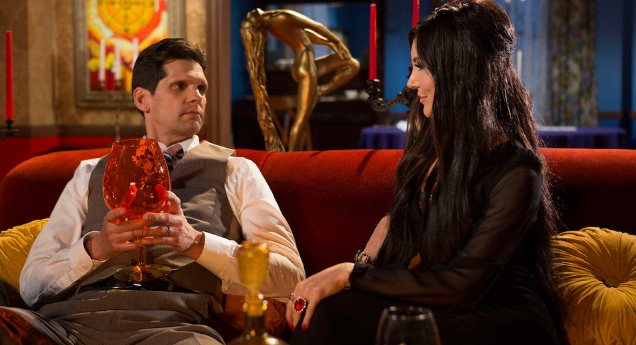
It exists where there’s sort of different strands of time happening together on the screen, in a way. Does that make sense?
Yes. Yes, it does. I guess what that is, for me, is that cinema time. It’s made in cinema time. So it takes place in the present, in terms of the story. But it’s filmed in cinema time. It’s designed and lit in cinema time. So for me, it’s the experiences that I’ve had watching films all my life that go into how it looks and feels.
Is that true of the previous films that you’ve made to date, as well?
Yes. Well, actually, this is the only film I’ve ever made that’s set in the present.
Oh, gotcha. Right.
Yeah. The other films were set in the 1930s, in the 1970s, the 1890s. So I made a film set in the present, but I didn’t change my technique, so it ends up being the same technique that I used to make period films.
Right. And with those previous films, did you also handle all those diverse elements of the filmmaking as well? The costuming and set design and so on – is that something you’ve done from day one?
Yes. Yes, it is.
Is that out of necessity or by design?
Well, it was out of necessity, sure [laughs]. I mean, as I get bigger budgets I won’t be doing the design anymore, I don’t think. Or at least not actually physically ironing hems and things like that, hopefully.
Yeah, I think that’s a good one to delegate. Do those different parts of the process inform one another as the film comes together for you? Are you thinking about those elements in tandem with one another?
Yes. Very much so. So, for example, when I was writing the script, I would think I was done. And then I would try to break it down in terms of number of locations and number of days so I could get ready to try to produce it. And I would realize that there were too many locations and we couldn’t afford it. It was just too much money. It was unnecessary. So I’d rewrite the script to try to take out some locations. I kept trying to streamline it that way. And then you’d find a location. And then I’d design the location, and then I would end up changing the dialogue to suit the new location or change it. So I kept changing – and then it kept changing. The set designs and the costume designs would change the script. So everything kept evolving that way. By the time we shot it, I really knew the movie, what it would be, because I’d worked on it for so long.
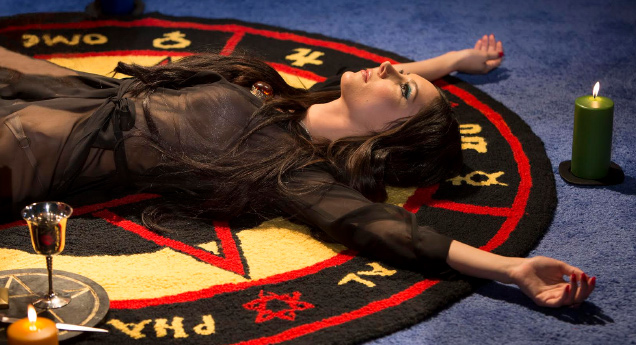
How long is that gestation process when you have all those different elements to work into the final product?
It was way too long for this project. It was about seven years. But for about three of those years I was really, really ill. That was the problem. So pre-production slowed down to a snail’s crawl. And that was the time when I was making most of my costumes. But I was making them kind of at half speed because I was so ill. I got vertigo, which I’d never even heard of before. But it is completely debilitating. And I was very nauseated all the time and dizzy, so it was very hard to concentrate at all. So yeah. It still would have taken a long time, but not nearly as long.
I suppose that things are probably a little bit different now with the reception that this has had. But was it a film that you tried to make with funders or other partners, or is it something that you just drove yourself?
I had a small amount of money that I was able to get promised when I first pitched the idea, and I never tried to go beyond that to get more partners and more money. And it was really not enough money to make the film. But I liked the idea that I had creative control. And I was used to having complete creative control, and I wanted to retain that. So I was willing to do all of this pre-production work myself to cut costs to be able to make it in that way with less money. And so I felt like I needed to do that. And for the next film, I’ll do it a different way. I’ll get more money, and I’ll have less control. I’ll be fine with that [laughs]. But this one, I really wanted to just really make it my own film, because I felt like I really needed to to have it come out right.
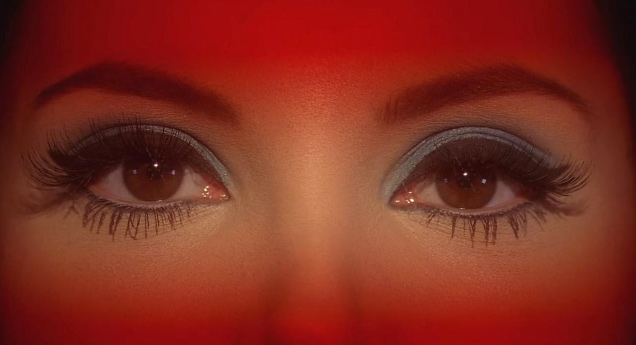
The casting of Samantha Robinson is really, really obviously so key to the film because she anchors everything. Was she a hard actor to find, or was she someone that you had in mind early?
No, actually. She just came through regular casting. She just auditioned for me within regular casting. And I didn’t know right away that she was right, but I got to know her. I met with her – she had two auditions and one private meeting. And it was in the private meeting that I suddenly realized that she was going to be so perfect. Because of something about her personality, her personal qualities, her power, and especially her face. Her face is very, very cinematic. I was watching it while we were having lunch. And I was trying to think like a cinematographer. And I started realizing that any angle of the shot that I could get of her face, just sitting there at lunch, would be like a masterpiece [laughs].
I was just thinking about her as if I was taking close-ups of her – she didn’t know I was doing that. But yeah, she’s also a very good actress. But it was just something about her face, I think.
You guys having lunch, I picture it happening in a very pink-coloured tea house for some reason.
No. We were just sitting at a Beverly Hills cafe outside. But she wore a lot of makeup during the meeting, which was very smart of her, because it was the kind of makeup that you wear for camera. And it really enabled me to have those fantasies about her while I was looking at her.
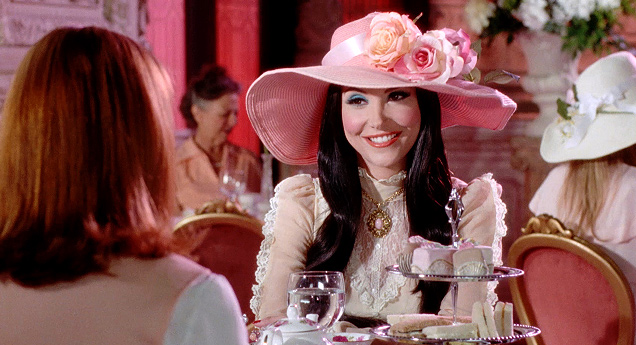
The pink tea house sequence in the film was probably the first time that I just found myself really quite lost in the frame while watching it. I don’t want to say that one of the striking sequences in ‘The Love Witch’ is a tea room. But it really, really is. I think that was one of the parts where I really just fell into the film. The degree of detailing in there, is that an obsessive thing to you? Or just a really specific idea of how you wanted to come across on screen?
I think that most movies today are in very masculine spaces. So we have action movies, and we have movies that are very dark. They’re not lit very much, and they’re very gray. And there’s just a lot… there’s not very much femininity. There are not many feminine spaces in movies anymore, especially not in dramas. You might get some in romantic comedies. So I just thought I really wanted to create a feminine space for the women’s conversation to take place in. And so sometimes when I do that, when I think, “Okay, I want to get symbolic with this,” I just keep going and going [laughs] making it more and more symbolic, more and more pink, more and more obvious, because I really wanted it to really feel like a feminine space and they’re having a feminine conversation.
Maybe sometimes I take it a little bit too far. I burlesque it a little bit. But I want it to be clear. It’s part of a narrative. It’s also this idea that it’s a little bit surreal because her fantasies that she’s talking about, like her self-fantasies about being a precious special princess, are not just in her dialogue. We see it all around her. We see it in her image and in what’s behind her. So it’s almost like what she’s talking about is being realized within the scene. And so I think that really strengthens what she’s saying. It makes it not just words, but it makes it so that you really take in, emotionally, what she’s talking about, about having princess fantasies.
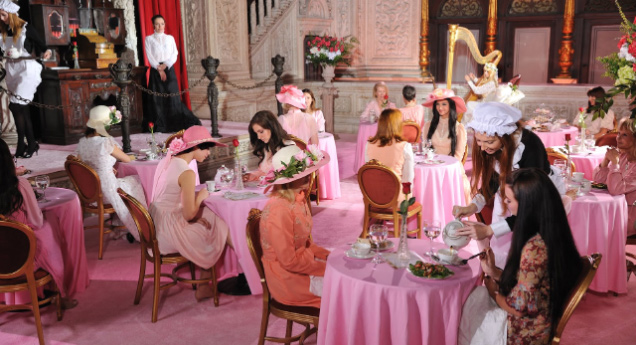
It’s interesting that a character that is so driven and in control of her actions is operating under the basis of those sort of misapprehensions, I suppose. Is that a key part of the film from your point of view?
Yeah. I think that on one level, they are misapprehensions. Part of it is a misapprehension. But part of it is actually, I think, just kind of female fantasy. So I think that the princess part of it, that you probably find many women that you would never even suspect would have those fantasies that have those fantasies [laughs]. And nobody will ever admit it. So I have these two characters. I have one who’s saying, “I have these fantasies”. And then you have the other character, who is horrified to admit it. So the character who’s horrified to admit it, that’s most women. But the character who feels that way, that’s like sort of the inner demon of women who actually want that. It’s like this regressive taboo part of women. And if that weren’t true, we wouldn’t have all the romance novels being so popular that women read, you know [laughs]?
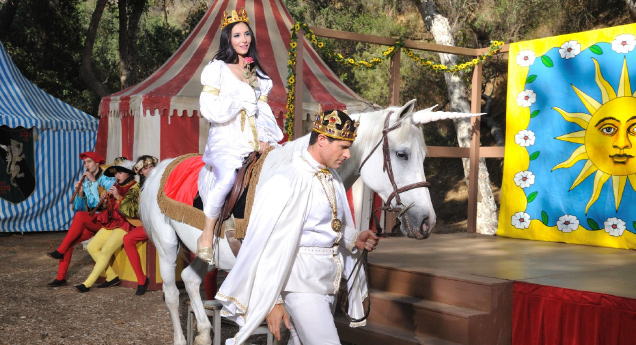
Alongside those emotions of femininity, and the cinephile aspect of the film, it’s also a film that’s really hot as well. There’s quite a visceral reaction. Is that something you’re striving for when you’re making it?
I think, first of all, that the most important thing for me in film is to achieve something emotionally in a scene. And there are many ways that you get there. And some of it’s through the script. Some of it’s through the acting. Some of it’s through the colour design and the things like designing the tea room in that way. That creates very strong emotions, actually. Some people might laugh at it, but it creates a very strong emotion about a feminine space. About pink. These things create very strong emotions. So I really try to do that in the soundtrack, in the editing. So it’s when I’m editing that I really feel like I create the film, because this is where I’m just feeling it. So I’ll keep cutting a scene until it feels like it’s bringing the right emotions out of me that I want it to, that I feel a certain way. So I don’t finish with a scene until the scene feels a certain way to me. It creates certain feelings. So it’s more intuitive when I’m cutting. And then, the ending didn’t feel right to me when I first cut the movie together, so I reshot it. Shot a new ending. It didn’t have the right feeling.
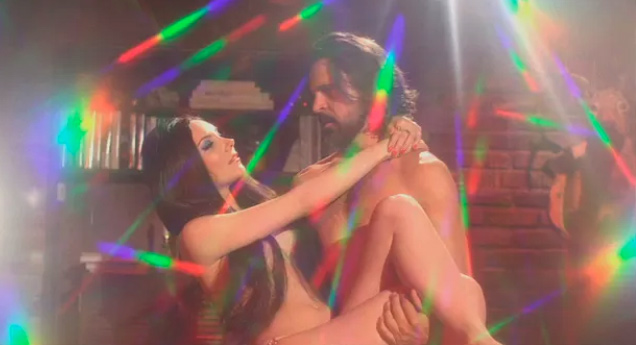
Specifically thinking about the sex and nudity in the film and the way that you have sex scenes, you have a beautiful cast on screen – what things are you striving for there?
I just think of those scenes that they look the same as any other scenes in a way. I achieve, I think, like you see in the tea room, a sort of an aesthetic arrest and a kind of erotic beauty with all of the pink, and that you do the same thing in a sex scene. So I don’t fundamentally separate sex scenes from everything else. I’m looking for beautiful shots. I’m looking for raw emotion. I’m looking for certain types of meanings. Feelings between characters. And I’m also looking to not ground it only in the carnal. To make it spiritual. I think folks see more in faces and having the faces look so beautiful and be so beautifully lit. And you have a little bit of skin and flesh. But it’s more, I think, about the spiritual experience of love. Love and sex. And I don’t know if you see that very much. I feel that Elaine sees sex and love as almost a spiritual religious experience. And this is how I wanted to try to capture it. And I feel that in that first sex scene with Wayne, I feel like he captures some of that feeling of sex as a religious experience, which he’s never experienced before. He’s captured that from her, and this is what completely destroys him.
‘The Love Witch’ plays at the NZ International Film Festival
Watch our preview of other NZIFF Incredibly Strange films

